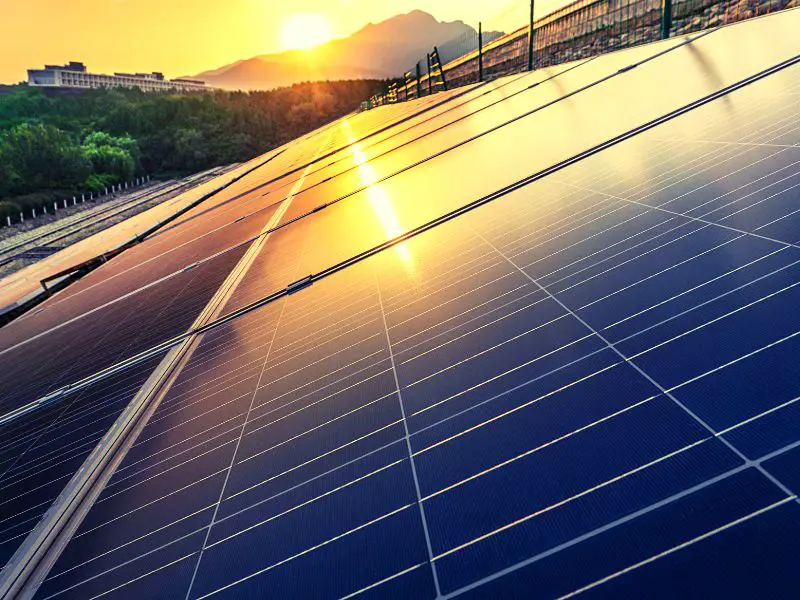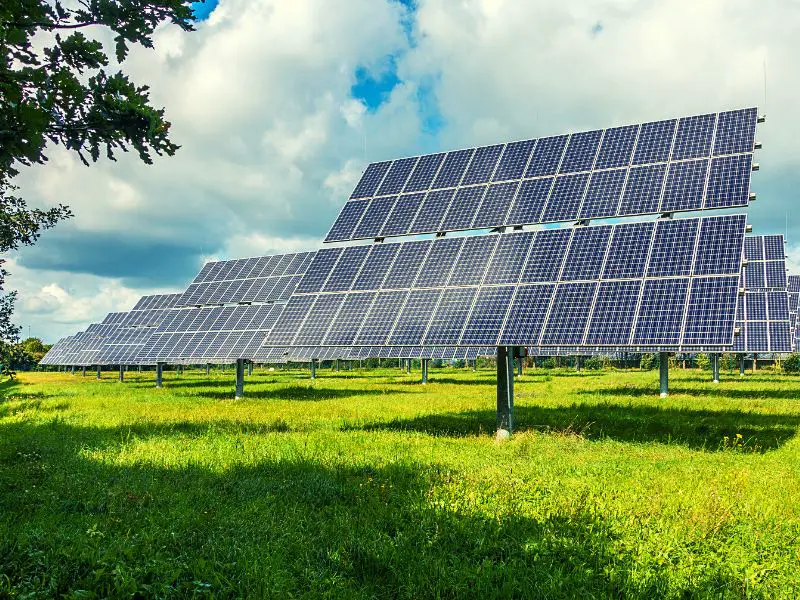Solar energy is renewable, but not without its faults. Though solar power can be collected anywhere on the globe, it is usually most effective in arid or tropical conditions. This article will focus on why solar energy is renewable, its history, and its environmental impact.
Is Solar Energy Renewable?
Solar energy is among the cleanest yet most abundant renewable resources, which means it will never run out. This is because solar energy is one of the oldest forms of energy. It just takes one hour for the sun to shine on the Earth’s atmosphere long enough to create an amount of energy that could, in theory, power every single person on the planet for an entire year. We need to build a sufficient number of solar panels to collect even just a portion of this energy.

A renewable energy source is any source of energy that replaces itself within a human timeframe. Unlike renewable energy sources like coal and oil, non-renewable energy sources like these form over hundreds of years, so they can’t be replenished at the pace people consume them, which is why they’re not called renewable.
Solar energy comes from the sun’s beams, whereas fossil fuels are derived from old carbon-rich rocks on Earth. As a result, solar energy will be present as long as the sun shines. (For example, NASA scientists estimate that the sun is nearly halfway through its existence, giving us around 4.5 billion years to harness solar energy.) Solar energy is a dependable energy source that will always be available to humanity.
Solar Energy Little History
Since dawn, humans have used solar energy to light fires and warm their homes. However, it wasn’t until 1839, when French physicist Alexandre-Edmond Becquerel discovered the photovoltaic effect that converts sunlight into electricity, that we began to understand how solar energy works.

After forty-four years, American inventor Charles Fritts created the first rooftop solar array by covering panels with selenium to generate an electric current. In 1905, Albert Einstein helped us grasp precisely how light provides the energy that may be captured to make electricity. The article written by Einstein fundamentally altered our understanding of light. It reportedly earned him the Nobel Prize.
In the 1950s and 1960s, the United States government pioneered modern PV technology for use in space programs. Since the 1958 launch of Vanguard I, the first spacecraft to use solar panels, PV solar panels have been an integral component of satellites and other spacecraft.
How Does Solar Energy Function?
The current solar panel creates electricity like Fritts’ solar array from the 19th century, except that we now collect solar energy using silicon solar cells that are far more efficient and can generate significantly more electricity.
However, to use electricity to power our lives, we need to change it from direct (DC) power to alternating (AC) power. This conversion takes place in a transformer. To accomplish this, the solar panel must be connected to a piece of equipment known as an inverter. This device converts the power from DC to AC. Solar energy is used to create clean power, which creates electricity that powers things in homes, companies, and other establishments.
2 Criticisms About the Use of Solar Energy
Several environmentalists have expressed concern over the manufacturing procedures of solar panels. They argue that the environmental effect of developing the technology may surpass the ecological advantages of solar energy. There are two issues to tackle head-on in the development of the future of the entire energy industry.
1. Collecting the Materials
Solar panels are made out of quartz. Quartz is a common material found worldwide in things and places (ex., watches, house countertops, and industrial buildings).
After being extracted from the ground, this material may turn into silicon, which manufacturers use to create semiconductors in solar panels. Therefore, as they manufacture more solar panels, there will always be a growing need for quartz.
The extraction of quartz has several of the same problems environmentalists have with mining in general and thus presents a challenge. In addition to wreaking havoc on the region’s topography, mining consumes enormous amounts of water. Miners are also at risk of developing silicosis due to their prolonged contact with the silica dust that the industry generates.
In response, several businesses, such as Chariot Energy, have switched to utilizing quartz-dense sand to lessen the damage that quartz mining has on the environment.
2. Assembling the Panels
When you have access to silicon without relying on heavy mining, the next stage is to make high-grade silicon capable of capturing sunlight in the most efficient manner possible. Once you have accomplished this, you may go on to the next phase.
The problem at hand is that the procedure that has traditionally been used to produce polysilicon has resulted in the creation of silicon tetrachloride. This trash leads to the acidification of the soil and releases hazardous chemicals into the atmosphere.
Fortunately, some studies have shown the possibility of producing polysilicon for solar panels without ever resorting to the production of silicon tetrachloride.

How Can Solar Energy Be More Eco-Friendly?
At its core, solar energy technology is sustainable energy. The solar panel industry has demonstrated its dedication to long-term sustainability by creating panels with an average lifespan of 30 years and a payback period of only a third. Furthermore, it is based on an infinitely replenishable resource: the sun!
- For every tree cut for rooftop solar installation, plant a replacement.
- Invest in eco-friendly items for solar panel firms’ workplaces.
- Ensure that all utility-scale solar systems respect the local ecosystem so that native flora and wildlife are unaffected.
Author’s Note
Solar energy is a clean, sustainable, and reliable energy source that will continue to be available to humanity for many generations. However, there is still a long way to go before the world uses solar energy as its primary source of energy to produce electricity. Therefore, we must strive for a world where solar power systems are ubiquitous.
Check out these resources to learn more about solar energy:


4 thoughts on “Solar Power: Is Solar Energy Renewable?”